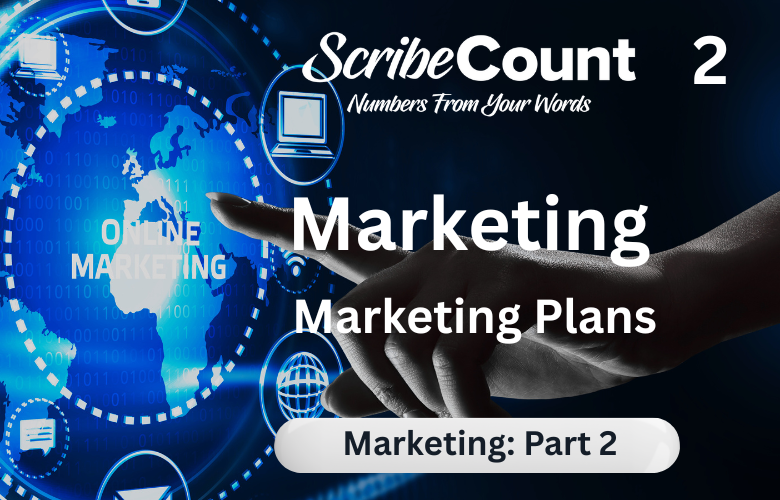Marketing Plans for Indie Authors: A Strategic Roadmap to Selling More Books
Why a Good Marketing Plan Is the Cornerstone of Indie Publishing Success
For indie authors navigating the unpredictable world of self-publishing, marketing can feel like both a mountain and a maze. The publishing world doesn’t just reward good writing; it rewards smart planning, consistent branding, and a clear understanding of how to reach the right readers at the right time. A well-crafted marketing plan isn't just a nice-to-have—it’s a foundational element that saves time, prevents wasted effort, and ensures that every dollar you spend works harder for your author business. This article will walk you through every major facet of indie author marketing strategy, from preparation and planning to measurement and reinvestment, helping you shape a sustainable and scalable book business that grows with each title you release.
Saving Time and Money Through Planning
Marketing without a plan is like trying to navigate a forest without a map. You might eventually find a path that works, but only after hours—or even years—of unnecessary wandering. By creating a structured plan, authors avoid common traps like overspending on ineffective ads, launching to the wrong audience, or wasting energy on time-consuming tactics that don’t move the needle.
A thoughtful marketing plan helps you frontload the work. Once you’ve taken the time to understand your audience, determine where they hang out online, and prepare the assets needed to reach them, you eliminate guesswork. Instead of panicking over your next tweet or throwing money at untested ad campaigns, you’ll have a roadmap guiding your every move. That’s the difference between being reactive and being intentional.
Why Research Matters More Than Ever
Before a single dollar is spent or a single ad is launched, research must come first. The most successful indie authors are those who study their market like a scientist studies data. They don’t just write a book and hope for the best—they analyze the competitive landscape, understand how other authors succeed in their space, and look for opportunities to carve out a unique position.
Genre research is critical. What tropes are trending? What cover styles dominate? How do the bestselling authors in your genre describe their books? Understanding this helps you package your book in a way that resonates with readers who are already primed to buy. When you know your niche, your messaging becomes more powerful and persuasive. Market research is the compass that ensures every step of your marketing journey is pointed in the right direction.
Understanding Genre and Reader Expectations
Every genre carries its own set of unspoken contracts between author and reader. Romance readers expect emotionally satisfying endings. Thriller fans crave page-turning tension. Science fiction readers want worldbuilding and ideas that challenge their imagination. Your job as a marketer is to not only deliver on those promises within your book but to communicate them effectively in your promotional efforts.
Knowing your genre inside and out helps you design marketing assets that fit. Your blurb, cover design, tagline, and even your website copy should signal to the reader: “This is for you.” If you try to market a cozy mystery like it’s a noir crime thriller, readers will click away confused. Reader expectations aren’t just a creative concern—they’re a core part of your marketing language.
What You Should Have Ready Before You Market
Marketing works best when the foundation is already laid. Before a single ad is run or a launch email is sent, you should have key elements in place. At a minimum, this includes a high-converting author website, a professional newsletter signup with a compelling reader magnet, a polished author bio, genre-appropriate covers, well-structured book descriptions, and a fully optimized presence on major sales platforms such as Amazon KDP, Kobo, Apple Books, and your own direct store if applicable.
You should also have universal book links using services like Books2Read or Linktree, an active email platform such as MailerLite, ConvertKit, or Klaviyo, and a content calendar for upcoming social posts, newsletter sends, and promotional pushes. These assets form your launchpad. Without them, marketing becomes more difficult, inconsistent, and less effective.
Strategy Versus Tactics
Many authors confuse tactics with strategy. A Facebook ad is a tactic. A book giveaway is a tactic. Hosting a webinar, running a newsletter swap, or posting a reel on Instagram—these are all tactical activities. But strategy is the larger framework guiding which of these you choose, when, and why.
A strong strategy might say, “I want to grow my email list by 1,000 subscribers in the next 90 days, focusing on high-conversion channels.” From there, your tactics might include running a BookFunnel promo, testing a lead magnet ad on Meta, or joining a genre-specific group promo. Your strategy ensures that your tactics are aligned, focused, and connected to a measurable goal. Without strategy, you’re just throwing spaghetti at the wall to see what sticks.
Building a Memorable Brand as an Author
Your brand is not your logo. It’s not your colors. It’s the emotional experience readers associate with your name. It’s the promise of a certain kind of story, delivered consistently. A strong brand creates loyalty. Readers who trust your brand will not only buy your next book—they’ll tell others about it.
Author branding includes your genre voice, your visual style, your tone on social media, and the emotional themes you return to again and again in your work. Everything from your website to your email footer should reinforce this identity. Over time, your brand becomes shorthand for the value you deliver. When readers say, “I always buy her books,” that’s the power of branding in action.
Establishing an Online Presence
In today’s digital world, visibility is everything. Readers can’t buy books they don’t know exist. Establishing a robust online presence means making it easy for readers to find you, trust you, and stay connected. That begins with a mobile-optimized website with fast load times and clear calls to action. Your site should include newsletter signup options, direct store links (if you sell through Shopify, WooCommerce, or Payhip), and clear navigation to your books and bio.
Your presence should also extend to platforms where your readers hang out. Whether that’s Facebook, Instagram, TikTok, YouTube, or Discord depends on your genre and ideal audience. Start small—choose one platform, master it, and expand only when your systems can handle the growth. Social media presence isn’t about vanity metrics. It’s about creating real connections that lead to long-term fans and readers.
Social Media Engagement That Converts
Many authors misunderstand social media. It’s not a billboard—it’s a conversation. If you treat it like a 24/7 sales pitch, you’ll lose your audience. But if you use it to build community, share behind-the-scenes content, and make your readers feel seen and valued, you’ll build trust that translates into sales.
Engagement means responding to comments, asking questions, sharing personal or thematic insights, and staying consistent in tone. Use tools like Later, Buffer, or Metricool to schedule content and track engagement. Above all, remember that social media success is a slow burn. A single viral post doesn’t build a career—but 100 genuine interactions can.
Budgeting and Creating a Timeline
Money and time are your two most limited resources. A good marketing plan respects both. Start by defining your total marketing budget, then divide it between list-building, paid ads, platform tools, design, and freelance support if needed. Budgeting prevents overspending and helps you weigh return on investment later.
Next, create a timeline. A book launch is not a one-day event. It’s a multi-phase process that includes pre-launch planning, soft-launch seeding, launch week promotion, and post-launch evergreen marketing. Set milestones and review them weekly. Your timeline is your accountability partner—it keeps your marketing on track even when writing deadlines loom.
Marketing New Releases Versus Backlist Books
New books are often easier to market because they come with built-in urgency. You can promote a launch date, create countdowns, run preorder campaigns, and take advantage of bestseller algorithms. But that doesn’t mean your older books should be ignored. Backlist titles represent some of the best ROI in your catalog, especially if they’re part of a series.
You can refresh backlist books with new covers, run discount promos using BookBub, Written Word Media, or Freebooksy, bundle them for seasonal promotions, or use them to fuel new email signups. Don’t underestimate your backlist—they’re the hidden engine that can sustain your career between new releases.
Setting Clear Goals to Stay Focused
Vague marketing goals lead to vague results. Saying “I want to sell more books” is like saying “I want to get healthy.” What does that mean? Instead, define goals with specificity. Aim to double your email list in six months. Grow your TikTok following to 5,000. Achieve 10x ROAS on your next Amazon Ads campaign. Specificity makes progress measurable and gives your marketing a target.
Setting goals also helps you decide which tactics to ignore. If your goal is to grow long-term reader relationships, it might make more sense to focus on email marketing than short-term ad blitzes. Your goals should guide every decision and help you prioritize what matters most for your career stage.
Measuring ROI and ROAS
Return on Investment (ROI) and Return on Ad Spend (ROAS) are essential metrics for understanding whether your marketing is working. ROI tells you how much profit you’re making relative to what you’ve spent across all efforts. ROAS focuses specifically on ad campaigns and tells you how much revenue you earn for every dollar spent on ads.
For example, if you spend $100 on Facebook ads and earn $300 in royalties, your ROAS is 3.0. If you spend $1,000 building your website and it helps you earn $5,000 in sales over a year, your ROI is 400%. These numbers help you determine where to double down—and where to pull back. Use tools like ScribeCount to track income across platforms and BookReport or AuthorAnalytics to monitor your revenue and ad spend.
Tracking Results and Reinvesting Wisely
Marketing is not a set-it-and-forget-it game. You need to track, evaluate, and iterate. Use spreadsheets or platforms like Airtable, Notion, or Trello to log your campaigns, costs, and outcomes. After each campaign, debrief: What worked? What didn’t? What will you change next time?
Reinvest your profits into strategies that scale. If newsletter swaps helped you gain 500 new readers, consider leveling up with a promo tool like StoryOrigin or BookFunnel. If Facebook ads gave you consistent 4x ROAS, reinvest with a bigger budget. Smart reinvestment ensures your book business becomes more profitable with each cycle.
Redefining Success and Staying Consistent
Success in indie publishing is a moving target. For one author, it may mean making $1,000 a month. For another, it’s hitting the USA Today list. For someone else, it’s simply getting their story into the world. Define your own success. Without your own metrics, it’s easy to chase someone else’s dream—and burn out along the way.
What matters more than going viral or becoming an overnight bestseller is staying consistent. Keep showing up. Keep learning. Keep testing. The authors who endure are not necessarily the most talented, but they are the most consistent and resilient. Your marketing plan is not a one-time document. It’s a living strategy you adapt, refine, and grow alongside your career.
Final Thoughts: Finding What Works for You
There’s no one-size-fits-all marketing formula. What works for a cozy mystery author may flop for a sci-fi writer. What launches one thriller to the top of the charts may fail for a romance series. That’s why your most important task is not copying others—it’s finding what works for you, your books, and your readers.
Test different approaches. Study your results. Follow your data and your instincts. With every launch, campaign, and experiment, you’ll build a marketing engine that’s uniquely yours—fueled by knowledge, driven by purpose, and powered by consistency.

